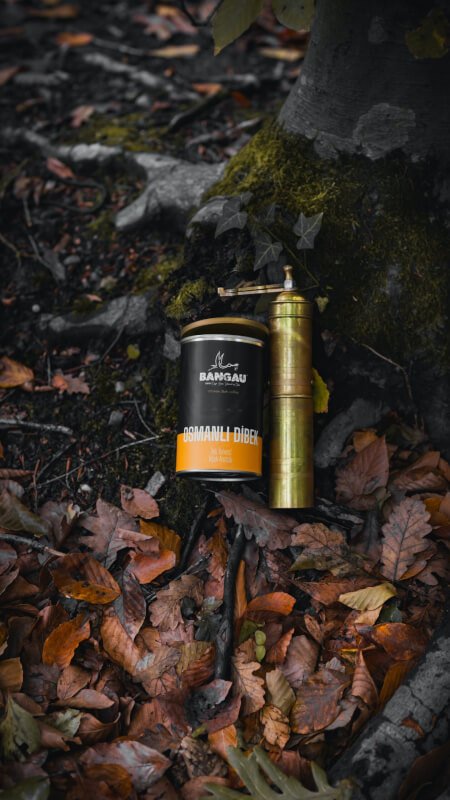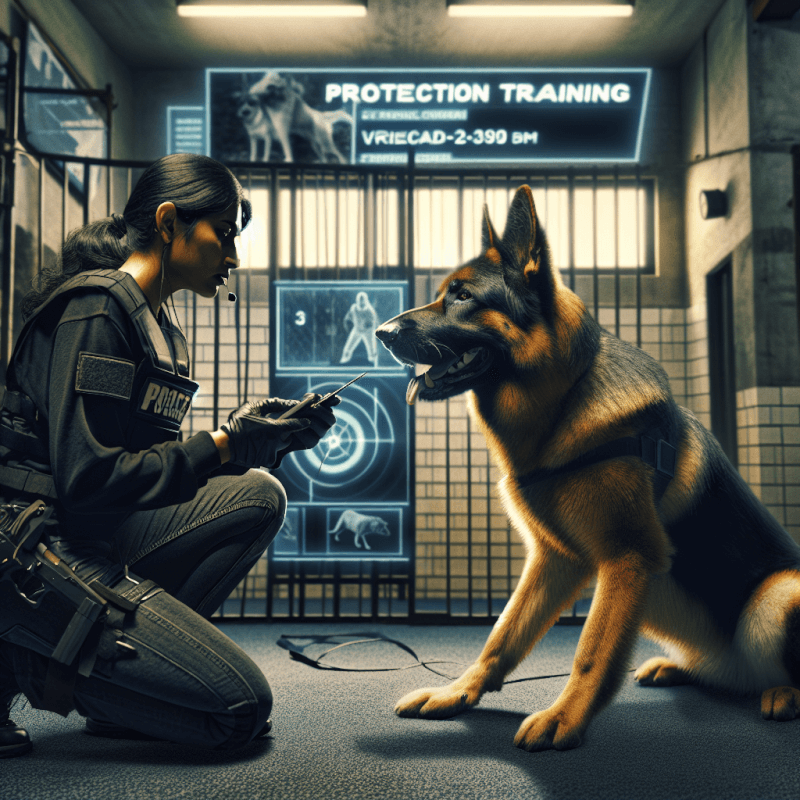If you’ve ever wondered about the purpose and benefits of protection training for dogs, you’ve come to the right place. This article will provide you with a brief overview of what protection training entails and how it can benefit our four-legged friends. From enhancing their confidence and obedience skills to ensuring their safety and the safety of others, protection training plays a crucial role in shaping a well-rounded and secure canine companion. So, let’s unravel the mysteries behind protection training for dogs and discover the positive impact it can have on their lives.

Basics of Protection Training
Definition of Protection Training
Protection training for dogs is a specialized type of training that focuses on teaching dogs how to protect their owners, property, or specific areas. It involves teaching dogs specific commands and skills that allow them to act as effective protectors in various situations.
Ready for Cat Trivia?
Test your knowledge about cats!

Goals of Protection Training
The main goals of protection training are to develop a dog’s protective instincts, enhance their skills to defend against potential threats, and improve their ability to deter and confront intruders. Protection training aims to create a well-balanced and reliable protection dog that can respond to commands while remaining focused, confident, and obedient.
Types of Protection Training
Personal Protection Training
Personal protection training focuses on teaching dogs how to protect individuals or families. This type of training emphasizes the dog’s ability to be loyal, responsive, and protective towards their owner or designated family members. Personal protection training includes teaching the dog to respond to specific commands, such as barking on command, restraining intruders, or providing physical protection if necessary.
Property Protection Training
Property protection training is designed to teach dogs how to protect a specific property or area. Dogs trained in property protection are taught to patrol and guard designated boundaries, alerting their owners to any potential threats or intrusions. This type of training involves teaching the dog to establish a perimeter, deter intruders, and provide vocal or physical protection as required.
Police and Military Protection Training
Police and military protection training focuses on preparing dogs to serve in law enforcement or military roles. These highly specialized training programs aim to develop dogs with exceptional obedience, agility, and the ability to apprehend suspects or detect specific substances. Police and military protection training often includes advanced searching techniques, tracking, and the ability to respond effectively in high-stress situations.
Training Methods and Techniques
Positive Reinforcement
Positive reinforcement is a widely used training method in protection training. It involves rewarding the dog with praise, treats, or toys when they exhibit desired behaviors. This form of training creates a positive association between the desired behavior and the reward, encouraging the dog to repeat the behavior in the future. Positive reinforcement helps build trust, strengthens the bond between the dog and handler, and promotes a willingness to learn and obey commands.
Clicker Training
Clicker training is a technique that utilizes a small handheld device that makes a distinct clicking sound. The clicker is used to mark the desired behavior at the precise moment it occurs, indicating to the dog that they have performed the correct action. This method allows for precise and timely reinforcement, helping the dog understand the specific behavior that is being rewarded. Clicker training is often used in conjunction with positive reinforcement techniques to facilitate effective communication between the dog and handler.
Compulsion Training
Compulsion training, often referred to as balanced training, utilizes a combination of positive reinforcement and gentle corrections to teach dogs desired behaviors. This method involves using techniques such as leash corrections or gentle physical guidance to redirect the dog’s behavior or reinforce obedience. Compulsion training aims to establish clear boundaries and rules for the dog while emphasizing positive reinforcement for desired behaviors. It is crucial to ensure that compulsion training is conducted gently and with respect for the dog’s physical and emotional well-being.
Essential Commands in Protection Training
Bark and Hold
The command “bark and hold” trains the dog to bark at a potential threat and hold their ground until further instructions are given. This command is crucial in personal protection training, as it allows the dog to create a deterrent effect while remaining in control until the owner can assess the situation.
Release
The “release” command instructs the dog to let go or cease engagement with a threat. It is essential for the dog to understand and respond to this command promptly to ensure the safety of all parties involved. Teaching a reliable release command helps maintain control over the dog’s actions and prevents any unintended escalation of aggression.
Out
The “out” command is used to instruct the dog to disengage from a person or object and move away. It is especially important in situations where the dog’s presence may no longer be required or when the dog needs to let go of its protective instinct. The ability to respond to the “out” command demonstrates the dog’s obedience and allows the handler to regain control of the situation if necessary.
Guard
The “guard” command is used to teach the dog to protect a specific area or object. Dogs trained to guard will remain vigilant, alerting their handler to any potential threats and taking appropriate action to deter intruders. The “guard” command is an essential component of property protection training and can help create a secure environment for the dog’s owner.
Agitation
Agitation training is used to simulate stressful situations and evoke the dog’s protective instincts. This training method involves controlled exposure to various stimuli, such as loud noises or unfamiliar individuals, to help the dog develop the ability to remain focused and determined under challenging circumstances. Agitation training is an integral part of preparing protection dogs for real-life scenarios and enhancing their ability to respond effectively in high-pressure situations.
Pursuit
The “pursuit” command teaches the dog to chase and apprehend a fleeing suspect or target. This command is commonly used in police and military protection training to prepare dogs for tracking down and restraining individuals. Properly teaching the pursuit command requires careful training and control to ensure the safety of both the dog and the handler.

Selecting a Protection Dog
Temperament and Drive
When selecting a dog for protection training, it is essential to consider their temperament and drive. A successful protection dog should have a balanced temperament, displaying confidence, courage, and the ability to remain calm under pressure. Drive refers to the dog’s motivation and desire to work. A protection dog should possess a high level of drive, exhibiting enthusiasm and eagerness to perform their protective duties.
Breed Considerations
Different dog breeds have varying characteristics and traits that can influence their suitability for protection training. Breeds commonly chosen for protection training include German Shepherds, Belgian Malinois, Doberman Pinschers, and Rottweilers. These breeds often possess the physical attributes, intelligence, and instincts necessary for protection work. However, it is important to note that individual temperaments and drives can vary within each breed, so careful evaluation of the specific dog is critical.
Breeder Reputation
Choosing a reputable breeder is crucial when selecting a dog for protection training. A reputable breeder will have a focus on breeding dogs with desirable temperaments, health, and working abilities. They will also provide proper socialization for the puppies, helping to lay the foundation for their future training. Researching breeders, reading reviews, and seeking recommendations from experienced trainers can help ensure that you are acquiring a dog from a responsible breeder committed to producing high-quality protection dogs.
Training Equipment
Collars and Leashes
Collars and leashes are essential tools in protection training. A well-fitted collar and leash allow for effective control and communication between the dog and handler. Different types of collars, such as flat collars, martingale collars, or prong collars, may be used depending on the individual dog’s needs and responsiveness. It is important to use collars and leashes that are appropriate for the dog’s size and strength to ensure both their safety and the handler’s control.
Bite Sleeves and Suits
Bite sleeves and suits are specialized training equipment used to teach dogs how to engage in controlled biting and gripping exercises. These tools provide protection for the handler while allowing the dog to practice their biting skills. Bite sleeves are typically worn on the arm, while bite suits cover the entire body. They are made from resistant materials designed to withstand the pressure and force exerted by the dog, offering a safe and realistic training experience.
Muzzles
Muzzles are used in protection training to ensure safety during initial stages of training or when introducing the dog to new environments or stimuli. Muzzles prevent the dog from biting or causing harm while still allowing for essential exercise and socialization. Muzzles are an important safety measure that protects both the dog and those around them, providing peace of mind during the training process.

Training Process and Duration
Puppy Socialization
Puppy socialization is a crucial step in the training process of a protection dog. During this phase, puppies are exposed to various people, animals, objects, and environments to help them develop proper social skills and adaptability. Positive encounters during this time can help shape a protection dog’s confidence and ability to interact appropriately with different situations and individuals.
Foundation Training
Foundation training involves teaching the fundamental commands and behaviors that form the basis of a protection dog’s training. This includes obedience training, leash and collar training, and basic commands such as sit, stay, and recall. Foundation training focuses on building a strong bond between the dog and handler, establishing trust, and laying the groundwork for more advanced protection training.
Ongoing Maintenance Training
Protection training is an ongoing process that requires consistent training and reinforcement throughout the dog’s life. Ongoing maintenance training involves regularly practicing and fine-tuning the dog’s skills, reinforcing commands, and introducing new challenges to maintain their proficiency. Regular reinforcement ensures that the dog remains sharp, responsive, and capable of carrying out their protective duties effectively.
Benefits of Protection Training
Enhanced Safety and Security
One of the main benefits of protection training is the enhanced safety and security it provides. A well-trained protection dog can serve as an effective deterrent, discouraging potential threats from approaching or causing harm. The dog’s presence alone can create a sense of security and peace of mind for both the handler and those around them, significantly reducing the risk of unwanted incidents.
Improved Bond with the Dog
Protection training helps forge a deep and meaningful bond between the dog and their handler. Through the training process, the dog learns to trust and rely on their handler for guidance and direction. The intensive training exercises and consistent interaction foster a unique relationship built on mutual respect, understanding, and companionship. This strong bond forms the foundation for a successful protection partnership.
Increased Confidence
For both the dog and the handler, protection training can significantly boost confidence levels. The dog gains confidence in their abilities, instincts, and training, allowing them to handle stressful situations with poise and determination. The handler also gains confidence, knowing they have a loyal and capable companion by their side to help deter and handle potential threats. Increased confidence in both parties creates a harmonious and effective protection team.

Common Challenges in Protection Training
Fear and Aggression Issues
Protection training requires carefully managing and addressing any fear or aggression issues that may arise. Dogs exhibiting fear or aggression can pose a potential risk to themselves, their handlers, and others. Experienced trainers use specialized techniques and exercises to help desensitize fearful dogs and redirect aggressive tendencies in a controlled and safe manner. It is essential to work with knowledgeable trainers who can address these challenges effectively and prioritize the well-being of the dog and those around them.
Maintaining Control
Maintaining control over a protection dog is crucial, as they must respond promptly and reliably to commands even in high-pressure situations. However, there may be instances where the dog’s protective instincts and prey drive override their training, resulting in difficulty maintaining control. Consistent training, reinforcement of commands, and ongoing socialization can help minimize these challenges and ensure that the dog remains responsive and obedient when it matters most.
Age and Physical Limitations
Both the age and physical limitations of a dog can impact their suitability for protection training. Younger dogs may lack the maturity and focus required for advanced protection work, while older dogs may have physical limitations that hinder their ability to carry out certain tasks. Additionally, certain breeds may be more prone to health issues that can impact their training and overall capabilities. It is crucial to consider these factors when selecting a dog for protection training and work closely with trainers to determine the most appropriate training program for the individual dog.
Conclusion
Protection training is a specialized form of training that focuses on developing a dog’s protective instincts and enhancing their ability to protect individuals, property, or specific areas. By understanding the different types of protection training, selecting the right dog, employing effective training methods, and addressing common challenges, individuals can empower themselves and their canine companions to create a safer and more secure environment. With proper training, a well-trained protection dog can forge a strong bond with their handler, enhance safety and security, and instill increased confidence for both parties involved.



